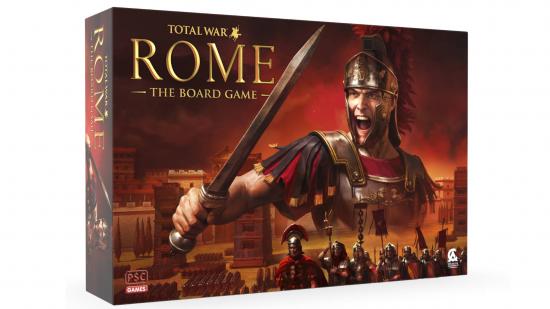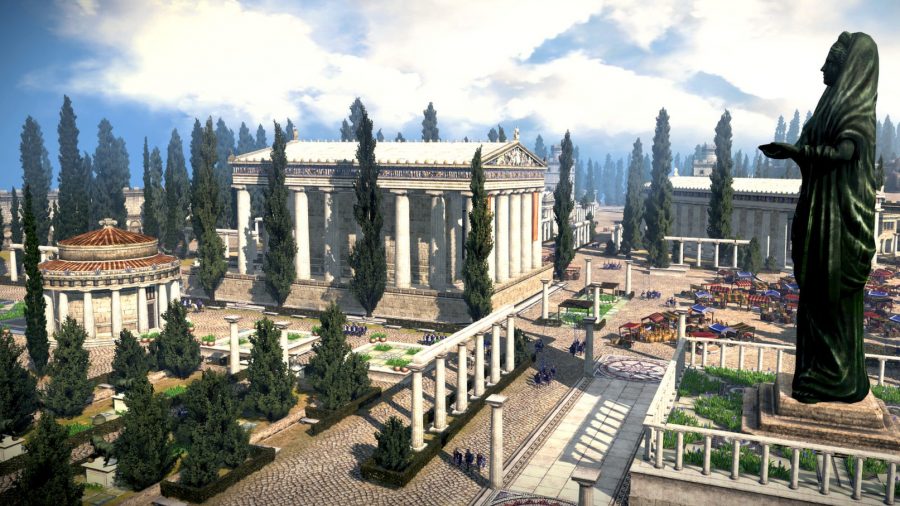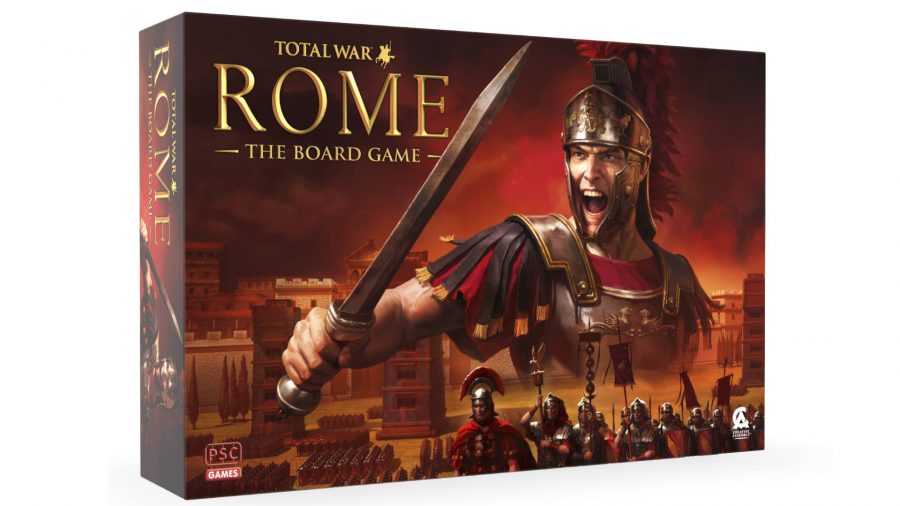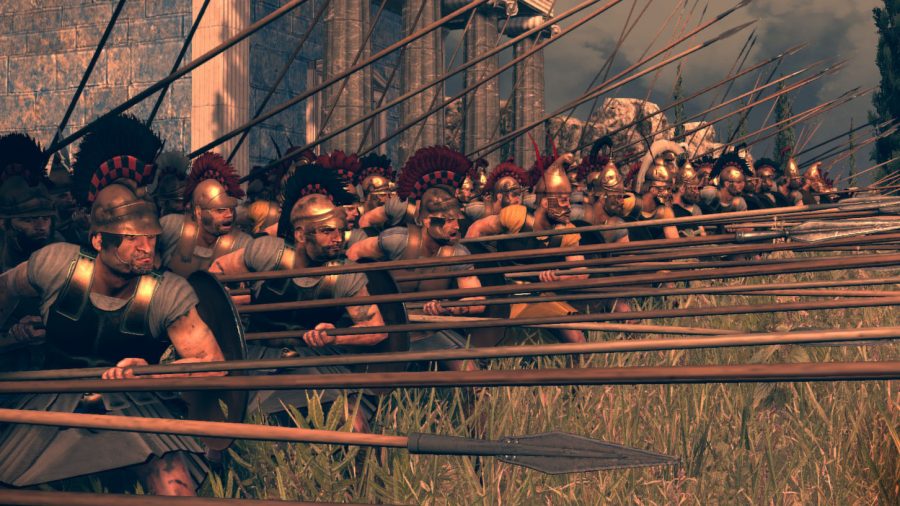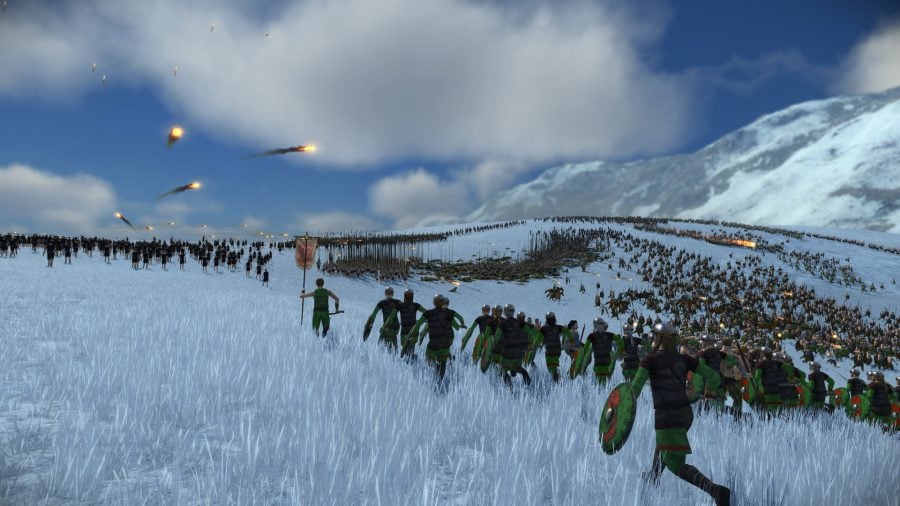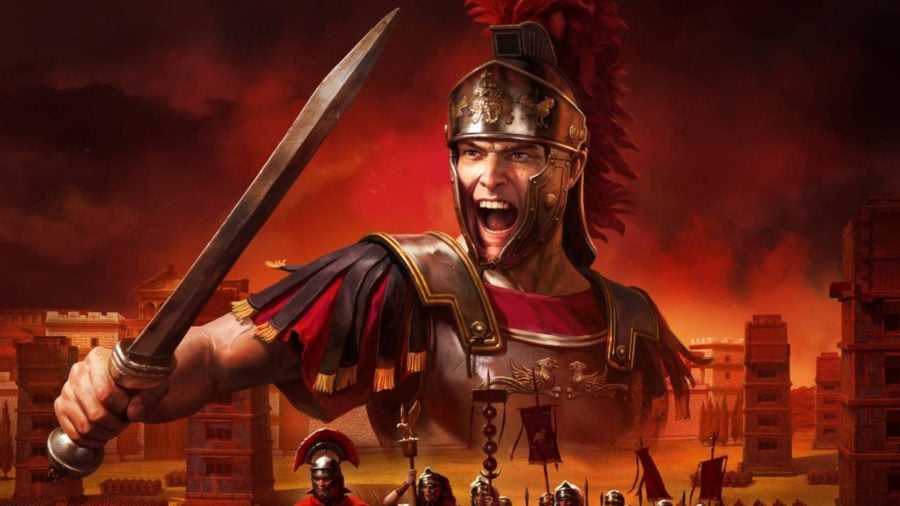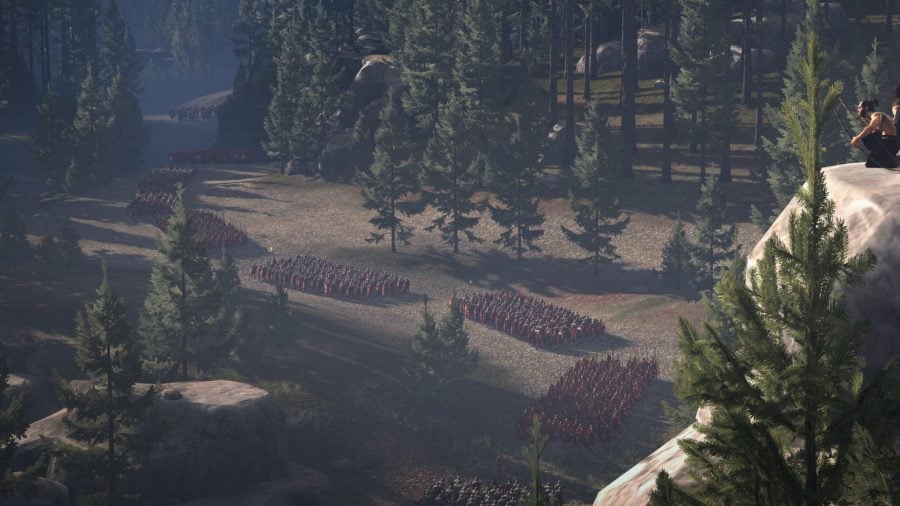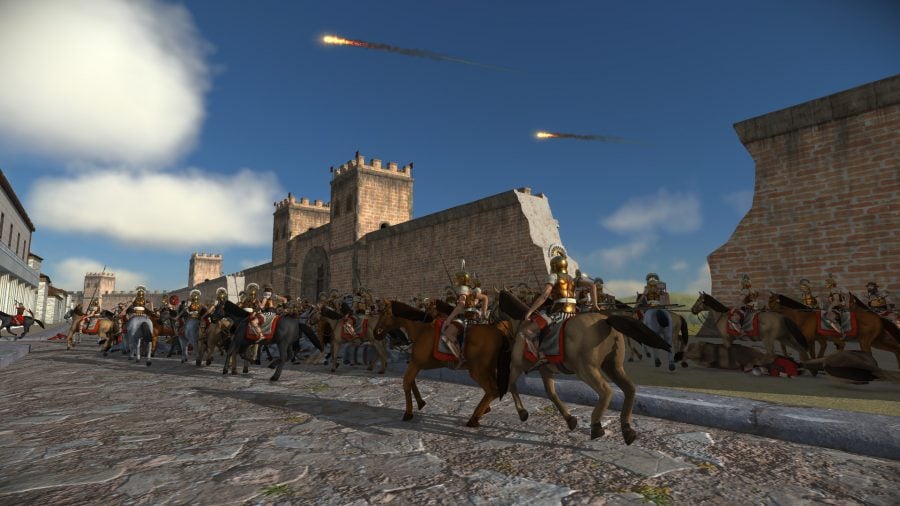Total War: ROME: The Board Game has a lot to live up to. The PC strategy game on which it’s based is an all-time classic that’s still hailed as one of the best entries in the Total War series. Bringing its mixture of real-time battling and grand campaigning to the tabletop is a tall order, but one that PSC games looks to be meeting.
We’ve already had several glimpses of the upcoming board game. We’ve seen how it will recreate the videogame’s RTS battles through a separate ‘Battleplay’ system that zooms into the conflict, and had a peek at several of the army pack expansions that will launch alongside the base game. Elsewhere, we’ve seen where the game’s map expansions might take it, and had a rundown of its two solo modes.
For a more thorough look, we sat down with designer Simon Hall ahead of the board game’s release date on November 30 – you can sign up to its Gamefound page now – to discuss its contents, design, and everything else we can expect.
How would you describe Total War: ROME: The board game?
Simon Hall: It’s a merger of two much-liked entities: a) the components and feel of Rome: Total War [R:TW], which I love, and b) the mechanisms and historical realism from my Mortem et Gloriam [MeG] tabletop wargames rules.
My aim was to produce a fast-moving board game where you keep the feel of all the things you do in R:TW, but with simple high-speed mechanisms so the game moves at pace. Then MeG cuts in to provide a slick combat mechanism when armies meet. In testing so far, we are finding it works really well and you get a pacey game in about 3 hours to a conclusion. It really has the great feel of both.
How does the game play – what will players be doing turn-to-turn?
SH: You do all the non-battle things in R:TW in a simplified way. You can upgrade your villages, towns, and cities; your agents can create alliances, trade or cause trouble for opponents; you spend to get technological developments, and you spend to build armies and navies. All of these are in a simple form that allows a rich tapestry of options for the players. You then fight battles using card-based armies and we have two levels of how to do that, just as in R:TW – a fast resolution version and a ‘play battle’ version.
The turns are quite interactive between players, as they circulate through phases. Phase 1 is the agent phase where you do things with your two agents. Phase 2 is the tax collection phase where you get money from your regions. You then have two campaigning seasons, which keeps the focus nicely towards the military conquest, supported by the economics and development. You end with a spending phase where you buy troops, upgrade towns, seek technological developments, or save money for future use.
So anyone who loves R:TW will immediately see that it builds on all the main themes. But each action is simple, so a turn moves rapidly through phases, and each phase goes round the board so you are rarely quiet for long.
How does combat work in the game?
SH: The game uses my proven system from MeG, which is based on a set of coloured dice called the skull dice. You have an army of up to 8 cards. Players play cards against each other blindly, and the card shows the dice rolled against an enemy. So, for instance, some pikemen may get a ‘red’ dice against troops but have a [special] effect of ‘cancelling any damage from cavalry’, as the long spears keep them at bay. A fast-play battle – which we call StratPlay – will be up to 8 sets of dice rolled against each other.
Then we have simple, but interesting, ways to bring in other key features. Each region has a terrain level from zero to four, and the first fights have to be in terrain up to that level. On each card are different dice for fighting in terrain, so pikes would get only a ‘black’ dice. Go to fight in the Alps without any terrain troops and you will be in trouble.
Tough tactics: These are the best strategy board games
Better generals mean that you get to see a few enemy cards before you choose what to put against them, and then you can add a skirmisher or artillery card to a play.
Even in the StratPlay version, you get really interesting decisions and 2-3 minutes of fun that every player wants to watch. Indeed, it is rare you don’t have a vested interest, so you find much banter where the non-fighting players are groaning or encouraging people to throw skulls!
What elements of the original videogame have you tried to capture in the board game?
SH: You can probably tell that I love R:TW so I have tried to capture all of them, but in a simple way each time. Let me give two examples in detail.
1. Regions are rated for tax income in millions of denarii. In R:TW you invest in markets, universities, etc. to develop each region. A board game cannot be so detailed, but I am sure everyone found, like me, that there was a general pattern to them. So in the game, you can invest to upgrade a region’s value – so they grow – and they get easier to defend with thicker walls as a result. A simple mechanism that gives the feel of the computer game as you have to decide how much to invest in your regions versus into armies.
2. Each faction has its own technological and social development tree. Some allow new troops – for example, the move from hoplites to pike phalanx – others are social, such as ‘illumination’. which is about making your philosophers and scientists excellent and thereby making other future developments easier.
We also have all the famous mercenaries of the era represented and a number of special events on cards that bring flavour to the game without dominating it, so no world-destroying earthquakes.
Could you give me a rundown of factions in the base game, and explain their unique attributes?
SH: The standard game is set up with four players and focuses on four factions: Rome, Greece, Carthage, and ‘The Barbarian Tribes’. Each has its own character, and after a recent testing session we all felt very in character. In addition to the different mixes of troop types, the tech trees, and a few other things give them their feel. A quick headline on each:
- Barbarian Tribes. These are set up to feel like a conglomeration of tribes (so Gaul, Belge, and Germania) at the beginning, but with the possibility of a great leader pulling them together as a united force. They have no navy but can choose to develop one.
- Rome. Mainly an infantry army with a tech tree that allows the development of artillery, better navies, enhanced agents, and an upgrade by going through the Marian reform of the legions.
- Greece. Starts with hoplite armies but allows the development of the pike phalanx, and thereby a Macedonian dominance arises. They can also get war elephants.
- Carthage. The strongest navy and the widest variety of troop types with the most cavalry. They have access to war elephants and have the most upgradable naval force.
What do you think it is about your design that best captures the videogame?
SH: The creation of easy mechanics for each of the main areas, which leaves the player with a whole plethora of investment and army decisions to make, just like the video game. Plus, the unique combat system that mirrors the ‘automatic resolve’ and ‘fight battle’ options, which is even more expandable directly onto a tabletop, if desired. It was a great design principle for the video game, and it is for the board game.
How did you draw from your past work on miniature wargames when designing the Total War: Rome board game?
SH: Really three areas: a) the combat system, b) the wealth of historical knowledge I have about nations and troop characteristics, and c) thinking about the linkage between them for the audience. I love tabletop gaming but I travel a lot with work, so R:TW was my constant companion on planes and in hotels for over a decade. I really enjoyed the strategic side of it. Also, my favourite wargaming is in fact campaigns. I ran one during the lockdown and it was great. All of that experience feeds into R:TW the board game.
What makes Total War: Rome The Board Game distinct from other tabletop strategy games?
SH: The battle focus and the way the overall systems work to engineer a real pace of play with a wide range of alternative decisions. There will be many different paths through the game. The dice-based combat system is unique and captures the historical character of troops and nations well.
Who are you designing the game for – veteran wargamers, players of the videogame, general tabletop players?
SH: All of them, but with the starting focus being the videogame players and general board gamers. I am also a big board gamer and have published two board games myself. This is aimed primarily at R:TW computer gamers who like the idea of a board game, and general board gamers who have an interest in ancient history. While I love tabletop gaming, it is not the focus here – but they are bound to like it anyway.
The base game is set up so that anyone interested in the topic will like it. Anyone who likes the videogame but fancies a 3-hour version with friends, face to face will love it. Then each to their own from there. I suspect most people will stick with the main game and repeat play it. A decent percentage will want the BattlePlay extension, and some veteran wargamers will no doubt set it up and play it for a year without ever using a card-based battle. But, of course, I do hope some players will get intrigued and move on to play MeG Pacto and tabletop wargaming.
What does the game look like? What components, boards, or maps will players be handling?
SH: There is a lovely board and box coming together. Each player has a play board that is an A4 card to organise your money, track your tech development, track your allies etc. And around this are laid out your armies, navies, and action cards. Each nation has an army pack (two for the Romans) and there is a mercenary pack as well. There is then a shared multi-purpose action card deck that drives the agents’ actions and special events.
Must-buys: Check out the best board games around in 2021
Physically, you have money and 3D armies and navies. In addition, we will likely aim for 3D markers for region upgrades and unrest etc. PSC will be working to set out the best base design, and we will have stretch goals on the Kickstarter to allow us to do a 3D version and, for those loving it, a ‘gold-plated’ version.
